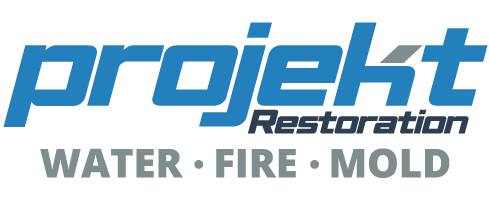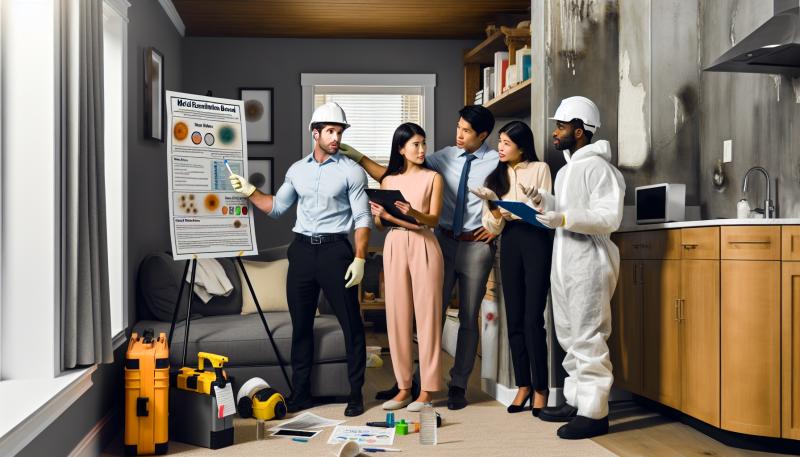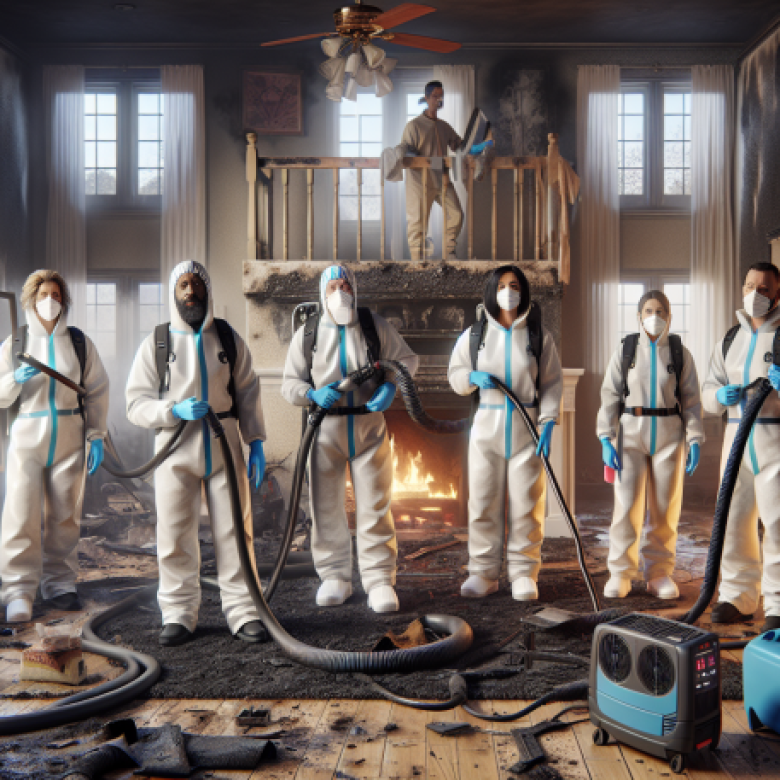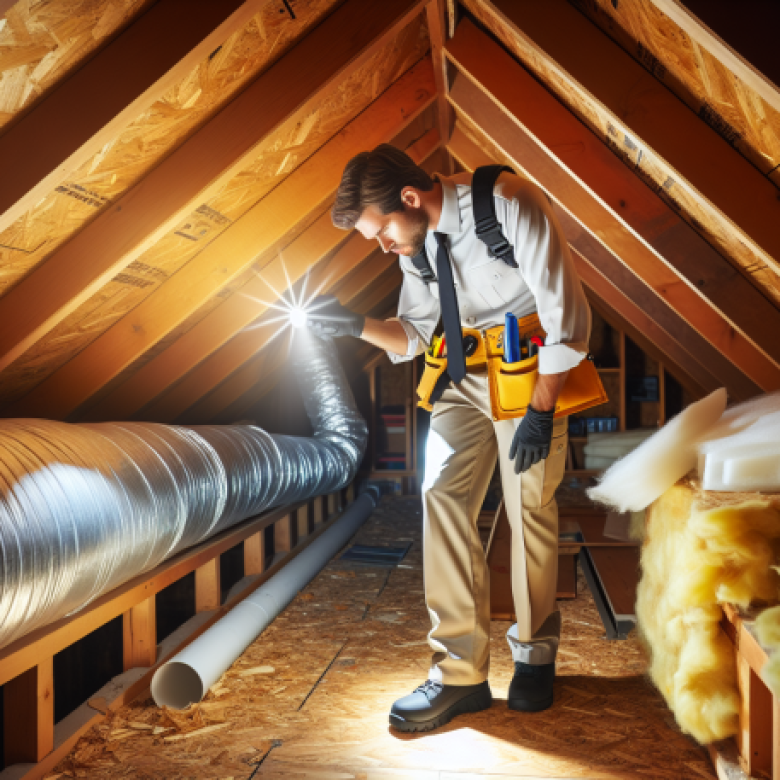Mold remediation is a critical process for maintaining a healthy indoor environment, yet many misconceptions surround it. At Projekt Restoration, your trusted experts in water, fire, and mold restoration, we understand that misinformation can lead to ineffective solutions and unnecessary stress. In this blog, we will debunk common myths about mold remediation, helping you to better understand the importance of professional mold assessment and the steps involved in effective mold cleanup. From the belief that all mold is toxic to the idea that DIY methods are sufficient, we’ll clarify these misconceptions and provide you with the facts. Whether you’re dealing with a minor mold issue or a significant infestation, our comprehensive services, including biohazard cleanup and reconstruction, ensure that your property is safe and restored to its best condition. Join us as we set the record straight on mold remediation and empower you with the knowledge to protect your home.
Understanding Mold: What It Is and How It Grows
Mold is a type of fungus that plays a crucial role in the ecosystem by breaking down organic matter. However, when mold grows indoors, it can lead to various health issues and structural damage. Understanding what mold is and how it grows is essential for effective mold remediation and prevention.
Mold thrives in environments that provide moisture, warmth, and organic material to feed on. Common sources of moisture include leaks, high humidity, and condensation. Mold spores, which are microscopic and can be found in both indoor and outdoor environments, become active when they land on a suitable surface with adequate moisture. Once activated, mold can grow rapidly, often within 24 to 48 hours, leading to visible colonies that can appear in various colors, including black, green, and white.
There are several types of mold, with some being more harmful than others. For instance, Stachybotrys chartarum, commonly known as black mold, is notorious for producing mycotoxins that can cause severe health problems, especially in individuals with respiratory issues or weakened immune systems. According to the Centers for Disease Control and Prevention (CDC), exposure to mold can lead to symptoms such as nasal congestion, coughing, skin irritation, and in some cases, more serious respiratory conditions.
To prevent mold growth, it is vital to control moisture levels in your home. This can be achieved through various methods, such as using dehumidifiers, fixing leaks promptly, and ensuring proper ventilation in areas prone to moisture, like bathrooms and kitchens. Regular inspections of your home for signs of water damage or mold can also help catch potential problems early.
It is important to note that mold can grow on a variety of surfaces, including wood, drywall, and carpets. Therefore, maintaining a clean and dry environment is crucial. If mold is discovered, it is often recommended to seek professional help for remediation. Professionals can conduct a thorough mold assessment to identify the extent of the problem and implement effective removal strategies.
In addition to health risks, mold can also lead to significant property damage. According to the Environmental Protection Agency (EPA), mold can weaken structural materials, leading to costly repairs. Therefore, addressing mold issues promptly is not only a health concern but also a financial one.
Understanding the lifecycle of mold can help in developing effective prevention strategies. Mold reproduces through spores, which are released into the air and can travel long distances. When these spores land on a damp surface, they can germinate and begin to grow. This growth process involves the formation of hyphae, which are thread-like structures that penetrate the material they are growing on, allowing the mold to absorb nutrients.
To further illustrate the importance of mold awareness, consider the following statistics:
- According to the CDC, approximately 50% of homes in the United States have some level of mold contamination.
- The EPA estimates that mold can grow on any organic material if moisture is present for 24 to 48 hours.
- Health effects from mold exposure can vary widely, with some individuals experiencing severe reactions while others may have no symptoms at all.
In conclusion, understanding mold and its growth patterns is essential for effective remediation and prevention. By controlling moisture levels and addressing any signs of mold promptly, homeowners can protect their health and property. If you suspect mold in your home, consider reaching out for professional help to ensure a thorough and safe remediation process. For more information on mold removal services, visit our Cooper City mold removal page or explore our contact options for personalized assistance. Remember, early intervention is key to preventing mold-related issues in your home.
Myth 1: All Mold is Toxic and Dangerous
One of the most pervasive myths surrounding mold is the belief that all mold is toxic and poses a significant danger to human health. While it is true that certain types of mold can produce harmful mycotoxins, the reality is far more nuanced. Mold is a natural part of our environment and exists in various forms, many of which are harmless. In fact, there are thousands of mold species, and only a small fraction are known to be toxic. Common household molds, such as Cladosporium, Penicillium, and Aspergillus, are often found indoors and are typically not harmful to most people.
The perception that all mold is dangerous can lead to unnecessary panic and overreaction. While it is essential to address mold growth in your home, especially if it is extensive or if you have specific health concerns, it is equally important to understand that not all mold requires immediate remediation. For most individuals, exposure to non-toxic molds does not result in adverse health effects. However, people with allergies, asthma, or compromised immune systems may experience reactions to mold spores, regardless of the mold type.
When dealing with mold, the focus should be on moisture control and prevention. Mold thrives in damp environments, so maintaining proper humidity levels and addressing water leaks or spills promptly can significantly reduce the likelihood of mold growth. If you suspect mold in your home, it is advisable to conduct a thorough mold assessment to identify the type of mold present and determine the best course of action.
In cases where toxic mold is identified, professional remediation is often necessary to ensure safe removal and to prevent future growth. This process may involve specialized techniques such as dehumidification and containment to protect the rest of your home. It is crucial to work with certified professionals who understand the complexities of mold and can provide effective solutions tailored to your specific situation.
In summary, while some molds can be toxic, the myth that all mold is dangerous is misleading. Understanding the different types of mold and their potential health impacts can help homeowners make informed decisions about mold management. By focusing on prevention and proper remediation when necessary, you can maintain a healthy living environment without succumbing to fear. If you have concerns about mold in your home, consider reaching out for professional help to ensure a safe and effective resolution.
Myth 2: You Can Remove Mold with Bleach Alone
A common misconception regarding mold remediation is the belief that bleach is a one-stop solution for eliminating mold. While bleach can be effective in certain situations, relying solely on it for mold removal is not only ineffective but can also lead to further complications. Mold is a resilient organism that thrives in damp environments, and it can penetrate porous materials like wood, drywall, and fabric. When bleach is applied, it may kill surface mold, but it does not penetrate deeply enough to eliminate the roots of the mold, which can lead to regrowth. Moreover, bleach is primarily composed of water, which can inadvertently provide additional moisture to the affected area, creating a more favorable environment for mold to flourish.
Additionally, using bleach can pose health risks. The fumes from bleach can irritate the respiratory system, eyes, and skin, especially in individuals with pre-existing health conditions. This is particularly concerning in enclosed spaces where mold is often found. Instead of using bleach, it is advisable to employ a comprehensive approach to mold remediation that includes identifying and addressing the source of moisture, using appropriate cleaning agents, and ensuring proper ventilation. For effective mold removal, consider consulting professionals who specialize in mold removal and can provide a thorough assessment of the situation. They can also recommend additional measures such as dehumidification to prevent future mold growth. Remember, a holistic approach is key to ensuring that mold is not only removed but also prevented from returning.
Myth 3: Mold Remediation is a DIY Task
One of the most pervasive misconceptions surrounding mold remediation is the belief that it is a task easily handled by homeowners themselves. While it may seem straightforward to clean up visible mold with household cleaners, this approach can be misleading and potentially dangerous. Mold is not just an aesthetic issue; it can pose serious health risks and structural damage to your home if not addressed properly.
Firstly, it is essential to understand that mold can grow in hidden areas, such as behind walls, under carpets, or in HVAC systems. A simple surface cleaning may not eliminate the root of the problem, allowing mold to return. Professional mold remediation involves a thorough mold assessment to identify all affected areas, including those that are not immediately visible. This comprehensive approach ensures that the source of moisture, which is critical for mold growth, is also addressed.
Moreover, mold can release spores and mycotoxins into the air, which can lead to respiratory issues, allergic reactions, and other health problems. Professionals are trained to handle these hazardous materials safely, using specialized equipment and protective gear to minimize exposure. Attempting to remediate mold without the proper knowledge and equipment can put you and your family at risk.
In addition to health concerns, improper mold remediation can lead to significant structural damage. Mold can weaken the integrity of building materials, leading to costly repairs down the line. Professionals not only remove the visible mold but also assess and repair any damage caused by prolonged exposure to moisture. This includes ensuring that the affected areas are properly dried and dehumidified, which is crucial in preventing future mold growth. For effective moisture control, consider utilizing dehumidification techniques that professionals can implement to maintain a healthy indoor environment.
Furthermore, many homeowners underestimate the complexity of mold remediation. It involves more than just cleaning; it requires a systematic approach that includes containment, removal, and prevention strategies. Professionals use advanced techniques such as infrared thermal imaging to detect hidden moisture and mold, ensuring a thorough remediation process. This level of expertise is difficult to replicate without specialized training and experience.
Lastly, DIY mold remediation can lead to legal and insurance complications. If mold is not properly removed and it causes further damage, homeowners may find themselves liable for repairs that could have been avoided with professional help. Additionally, many insurance policies require that mold remediation be performed by certified professionals to be covered.
In conclusion, while the idea of tackling mold remediation as a DIY project may seem appealing, it is fraught with risks and challenges that can lead to more significant problems. Engaging a professional service ensures that the job is done correctly, safely, and efficiently. If you suspect mold in your home, it is wise to consult with experts who can provide a thorough assessment and effective remediation solutions. For more information on how to handle mold issues in your home, reach out through our contact page or explore our range of services tailored to mold removal and prevention.
Myth 4: Mold Only Grows in Damp Areas
One of the most pervasive myths surrounding mold growth is the belief that it only thrives in damp areas. While it is true that moisture is a significant factor in mold proliferation, this misconception oversimplifies the conditions under which mold can develop. Mold is a type of fungus that requires three primary elements to grow: moisture, organic material, and a suitable temperature. While damp areas, such as basements, bathrooms, and kitchens, are common breeding grounds for mold, it can also flourish in seemingly dry environments if the right conditions are present.
For instance, mold can grow in hidden spaces such as behind walls, under carpets, or within HVAC systems where moisture may accumulate without being immediately visible. Even small leaks or condensation can create enough moisture for mold to take hold. Additionally, mold spores are ubiquitous in the environment, and they can settle on various surfaces, including wood, drywall, and fabric. If these surfaces are exposed to moisture, even in minimal amounts, mold can begin to grow.
Another critical factor to consider is the temperature. Mold typically thrives in warm environments, but it can also survive in cooler conditions. This means that even in air-conditioned spaces, if there is a source of moisture, mold can still develop. For example, a poorly insulated attic or a damp crawl space can provide the right conditions for mold growth, regardless of the overall humidity levels in the home.
Furthermore, mold can also be found in areas that are not traditionally considered damp. For example, kitchens can harbor mold growth around sinks, dishwashers, and refrigerators, where moisture can accumulate. Similarly, mold can grow in laundry rooms, especially if wet clothes are left in the washer for extended periods. Even outdoor areas, such as patios or decks, can be susceptible to mold growth if they are shaded and retain moisture.
It is also important to note that mold can be a health hazard, leading to respiratory issues and allergic reactions. Therefore, it is crucial to conduct a thorough mold assessment in your home or business, regardless of whether you suspect dampness. Identifying potential mold growth early on can help prevent more extensive damage and health risks.
To effectively combat mold, it is essential to address the underlying moisture issue. This may involve repairing leaks, improving ventilation, or utilizing dehumidification systems to reduce humidity levels. Regular maintenance and inspections can also help identify potential mold growth before it becomes a significant problem.
In conclusion, while damp areas are indeed conducive to mold growth, they are not the only places where mold can thrive. Understanding the broader conditions that allow mold to flourish is vital for effective mold remediation. By recognizing that mold can grow in various environments, homeowners can take proactive measures to protect their properties and ensure a healthy living space. If you suspect mold in your home, do not hesitate to reach out for professional help, such as consulting with a mold remediation expert who can provide guidance and support in addressing the issue.
Myth 5: Once Mold is Removed, It Won’t Come Back
One of the most pervasive myths surrounding mold remediation is the belief that once mold is removed, it will never return. This misconception can lead to a false sense of security for homeowners and property managers alike. In reality, mold is a resilient organism that can easily re-establish itself if the conditions that allowed it to thrive in the first place are not addressed. Mold spores are ubiquitous in the environment, and they can enter buildings through open doors, windows, ventilation systems, or even on clothing and pets. Therefore, simply removing visible mold does not eliminate the potential for future growth.
To effectively prevent mold from returning, it is crucial to identify and rectify the underlying issues that contributed to its initial growth. Mold thrives in damp, humid environments, so controlling moisture levels is essential. This can involve repairing leaks, improving drainage, and ensuring proper ventilation in areas prone to humidity, such as bathrooms and basements. Implementing dehumidification systems can also help maintain optimal humidity levels, making it less conducive for mold to flourish.
Another critical aspect of mold prevention is conducting a thorough mold assessment after remediation. This process helps identify any hidden mold or moisture issues that may not have been apparent during the initial cleanup. Professionals can use advanced techniques, such as infrared thermal imaging, to detect moisture behind walls and in other hard-to-reach areas. By addressing these hidden problems, property owners can significantly reduce the likelihood of mold returning.
It is also important to understand that mold can grow on a variety of surfaces, including wood, drywall, and even fabric. Therefore, when remediation occurs, it is essential to ensure that all affected materials are properly cleaned or replaced. In some cases, items that cannot be adequately cleaned may need to be discarded to prevent mold from re-establishing itself. This is particularly true for porous materials that have absorbed moisture and cannot be effectively dried out.
Moreover, regular maintenance and monitoring are key to long-term mold prevention. Homeowners should routinely check for signs of water damage or leaks and address them promptly. Keeping an eye on humidity levels, especially in areas prone to moisture, can help catch potential mold growth before it becomes a significant issue. Utilizing tools such as humidity monitors can aid in maintaining a healthy indoor environment.
Education also plays a vital role in mold prevention. Understanding the conditions that promote mold growth can empower property owners to take proactive measures. For instance, knowing that mold spores can thrive in environments with humidity levels above 60 percent can encourage individuals to take steps to keep their homes dry and well-ventilated.
In conclusion, the belief that mold will not return once it has been removed is a dangerous myth that can lead to complacency in mold management. To truly safeguard against mold regrowth, it is essential to address the root causes of moisture, conduct thorough assessments, and maintain vigilance in monitoring and maintaining indoor environments. By taking these proactive steps, homeowners can significantly reduce the risk of mold returning and ensure a healthier living space for themselves and their families. For more information on effective mold removal strategies and prevention techniques, consider reaching out to professionals who specialize in mold removal and remediation services.
The Importance of Professional Mold Assessment and Remediation
Mold is a common issue that many homeowners face, yet there are numerous misconceptions surrounding its assessment and remediation. Understanding the importance of professional mold assessment and remediation is crucial for maintaining a safe and healthy living environment. Mold can pose serious health risks, particularly for individuals with respiratory issues, allergies, or weakened immune systems. Therefore, addressing mold problems promptly and effectively is essential.
One of the primary reasons to seek professional help is the complexity of mold growth and its potential health effects. Mold spores are ubiquitous in the environment, and while they are generally harmless in small quantities, they can proliferate rapidly in damp conditions. A professional mold assessment involves a thorough inspection of your property to identify not only visible mold but also hidden mold that may be lurking behind walls, under carpets, or in other concealed areas. This comprehensive approach ensures that all mold sources are identified and addressed, preventing future outbreaks.
Moreover, professionals utilize advanced techniques and tools, such as infrared thermal imaging, to detect moisture issues that contribute to mold growth. This technology allows for a non-invasive assessment of your property, identifying areas of concern that may not be visible to the naked eye. By pinpointing the source of moisture, professionals can implement effective remediation strategies that address the root cause of the problem rather than merely treating the symptoms.
Another critical aspect of professional mold remediation is the safety of the occupants. Mold can release mycotoxins that can lead to various health issues, including respiratory problems, skin irritation, and even neurological effects in severe cases. Professionals are trained to handle mold safely, using appropriate personal protective equipment and containment measures to prevent the spread of spores during the remediation process. This ensures that your home is not only free of mold but also safe for you and your family.
Additionally, professional mold remediation services often include a detailed plan for preventing future mold growth. This may involve recommendations for dehumidification, improving ventilation, and addressing any underlying water damage issues. By taking a proactive approach, homeowners can significantly reduce the likelihood of mold returning, saving time and money in the long run.
It is also important to note that DIY mold removal can often lead to more significant problems. Many homeowners underestimate the extent of mold growth and may inadvertently spread spores throughout their home during the cleaning process. Without proper training and equipment, it is easy to overlook hidden mold or fail to address the moisture source, leading to recurring issues. Engaging a professional service ensures that the job is done correctly and thoroughly, providing peace of mind.
In conclusion, the importance of professional mold assessment and remediation cannot be overstated. It is not just about removing visible mold; it is about ensuring a safe living environment, preventing future growth, and addressing the underlying causes of mold proliferation. Homeowners should prioritize professional services to effectively manage mold issues, protect their health, and maintain the integrity of their property. For those facing mold concerns, reaching out for a professional mold assessment is a crucial first step. Additionally, understanding the benefits of dehumidification can further aid in creating an environment that discourages mold growth. By taking these steps, homeowners can ensure their living spaces remain healthy and mold-free.
In conclusion, understanding the truth behind common myths about mold remediation is essential for homeowners and property managers alike. By debunking misconceptions such as the effectiveness of DIY solutions, the belief that all mold is toxic, and the idea that mold can be completely eradicated, we empower ourselves to make informed decisions regarding mold management. Proper mold remediation is not just about removing visible growth; it involves addressing the underlying moisture issues, ensuring thorough cleaning, and taking preventive measures to avoid future infestations. By relying on professional expertise and scientifically-backed methods, we can create healthier living environments and protect our properties from the damaging effects of mold. Remember, knowledge is your best defense against mold—stay informed, stay proactive, and don’t let myths dictate your approach to mold remediation.





